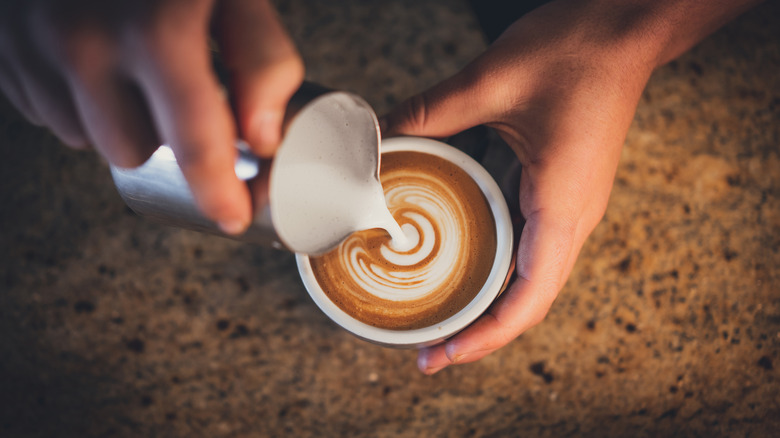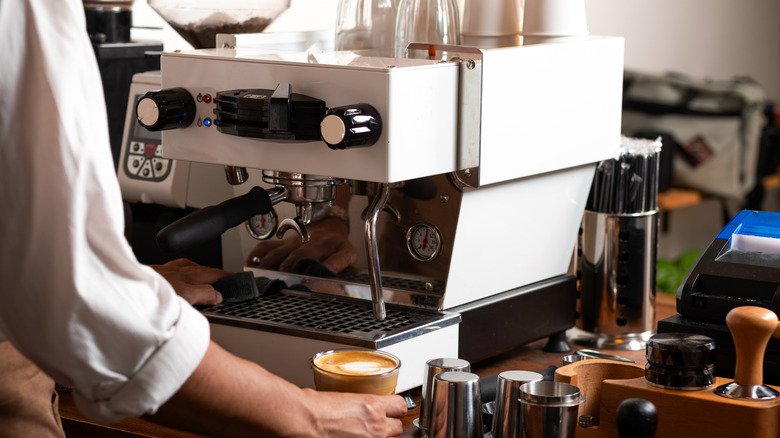The Wartime Legend Surrounding The Origins Of Cappuccinos
Today, cappuccinos are the gold standard by which a coffee shop is measured, but hearsay and folklore swirl around their alleged origin. The cappucino is often considered a wartime drink, thanks in part to the spread of cheap and easy-to-use espresso machines after World War II. But the combat that this beverage is linked to — at least, according to some — took place during the 1600s, when the Ottoman Empire laid siege to Vienna.
According to legend, a monk named Marco d'Aviano was sent by the Pope to unite the Christian armies of the Holy Roman Empire and the Polish-Lithuanian Commonwealth. When the siege was lifted and the Ottomans fled, the army left behind all their coffee. Finding the jittery, dark drink too bitter, they added milk and honey. The drink was called a cappuccino because the monk was part of the Capuchin order— a nice story, although one that doesn't mesh with actual historical accounts that cite Charles of Lorraine as the one sent to unite the armies.
The more likely, though less dramatic origin for cappuccino is that it grew out of coffee cultures in Austria and Italy. An Austrian drink, the kapuziner, is probably the origin point for cappuccino; it was coffee served with whipped cream and sugar, and first documented in the 18th century. More than 200 years later, espresso drinks with milk became an economical and quick way to get a good amount of fat, sugar, and protein for breakfast in Northern Italy.
Cappuccinos wouldn't exist without the espresso machine
I would be remiss if I didn't talk a little about the history of the espresso machine, which makes cappuccinos possible in the first place. The need for espresso came from European cafe owners who wanted to make coffee as quickly as possible (after all, more coffee means more money). Before espresso machines, coffee purveyors relied on numerous methods like the Turkish ibrik (or cezve), a copper pot with a long handle that pours finely ground coffee into cups without the use of a filter.
By the mid-1800s, there were large machines that could make batches of coffee, but the technology never really caught on. It wasn't until the early 1900s that a coffee machine with portafilters, steam valves, boilers, and gauges was invented by Luigi Berezza. Basically, his machine would heat water in a large chamber, which, when hot enough, would force the water through a puck of espresso. Though more advanced, you still needed an open flame for his machine to work, which made brewing wildly inconsistent: It barely produced enough pressure to make what we would call espresso today, which made a large but bitter espresso drink.
It wouldn't be until after WWII that espresso machines took on their characteristic speed, size, and ability. In order to create perfect espresso and steamed milk, you need tons of super-heated water on demand and plenty of pressure. The hot water is forced through the ground espresso in the portafilter, which is how it can extract all the flavor compounds in coffee, while only taking about 25 to 30 seconds to brew. The espresso drinks we love today have a long, varied history that took centuries of technological innovation to achieve.

